No Products in the Cart
Dog Wobbler Syndrom: A Great Dane's mom and a vet opinion

Hey Jope team! Today, let's discuss Wobbler Syndrome with Natalie from Big Barker.
Natalie is also the proud mom of Gigi, a stunning Great Dane who has the Wobbler Syndrome. Natalie advocates on behalf of Great Danes and their health by educating others with her blog.
1) What is Wobbler Syndrome?
Dr. Jeremy: Let's start at the beginning. What is Wobbler Syndrome? A good question.
As its name suggests, it causes dogs to wobble. Specifically, Wobbler Syndrome is a neuropathic disease that affects dogs' stability on their legs, leading to wobbling.
Wobbler Syndrome, also known as Cervical Spondylomyelopathy, happens when the spinal cord and nerves in the neck get squeezed, causing nerve-related issues.
This pressure is often due to the spine bones (the vertabrae) being misshaped or not aligned properly, or a mix of these factors. The issues it leads to can range from a little clumsiness to complete paralysis of the legs.
2) How Can I Tell if My Dog Has Wobbler Syndrome?

Natalie: Wobblers needs to be diagnosed with an MRI so it might be hard and expensive. I really recommend putting your dogs on pet insurance, prior to ever (hopefully never!) receiving a life-changing diagnosis. Thankfully, Gigi has pet insurance and we were able to diagnose her.
We originally noticed Gigi holding up one of her front limbs. I did not think about Wobblers because I always thought of Wobblers being in the back end, with wobbly back legs/hips. After she got an x-ray of her front legs and they were unremarkable, we moved forward with an MRI.
Gigi's experience taught me that dogs with Wobbler Syndrome might show signs in either their front or rear, depending on the compression's location. Over time, Gigi exhibited various symptoms, such as:
- Occasionally lifting either front leg
- Lowering her head during walks or runs
- Whimpering upon getting up or yelping
- Showing reluctance or discomfort when navigating stairs, either ascending or descending
- Demonstrating a hesitation to climb or descend stairs
- Exhibiting sensitivity in her paws, which intensifies with paw handling or during nail trimming
- Developing a limp in her front legs
- Appearing to suffer from 'shoulder' pain, which is actually pain originating in the neck
Dr. Jeremy: To add to what Natalie was saying, Wobbler Syndrome includes:
- Wobbly gait, particularly in the hind legs
- Neck pain and stiffness (not always present)
- Low head posture and discomfort during movement
- Weakness and muscle loss near the shoulders
- Short-stride walking with spasticity in front limbs
- Scuffed toenails from uneven walking
- Difficulty rising from a lying position
- In severe cases, paralysis
3) The Types of Wobbler Syndrome
Dr. Jeremy: Here are the two main forms of Wobbler:
- Disc-Associated Wobbler Syndrome (DAWS): Common in larger breeds like Dobermans over 3 years old, this form involves intervertebral disc herniation, leading to spinal cord compression.
- Bony-Associated Cervical Spondylomyelopathy (BACS): Often seen in giant breeds like Great Danes, this form involves bony malformations compressing the spinal cord, typically affecting young adults under 3 years.
4) What are the Breeds at Risk of Wobbler?
Dr. Jeremy: Wobbler Syndrome mainly impacts larger dog breeds, such as Great Danes, like Gigi, and also includes:
A Veterinary Medical Database recent study showed that this condition impacts 4.2% of Great Danes and 5.5% of Dobermans.

5) Living with Wobbler Syndrome: Natalie's Experience
Natalie: I have to admit, living with a Great Dane with Wobblers Syndrome is not easy. When Gigi got diagnosed, I thought her quality of life was going to be limited so much. Although Gigi's lifestyle is different now that she has been diagnosed, she still lives a very fulfilled and happy life.
One thing that I have learned is that our lifestyles will always be changing with Wobbler Dogs. When you own a dog, your lifestyle is always important, but it's especially crucial if your dog might face daily pain or discomfort.
Adapt your living space, daily schedule, and activities to meet the special requirements of your dog. Creating a nurturing and supportive setting, coupled with proper medical treatment and therapeutic interventions, can significantly reduce their discomfort and enhance the quality of time spent with your devoted and adaptable companion. The challenges faced together can strengthen the bond between you and your dog, making every effort towards their health and happiness a worthwhile endeavor.
If you're reading this and don't yet have pet insurance, it's something I strongly advise!
Gigi enjoys cold laser therapy sessions with her rehabilitation veterinary technician, Deena, at Elevate Animal Rehab.
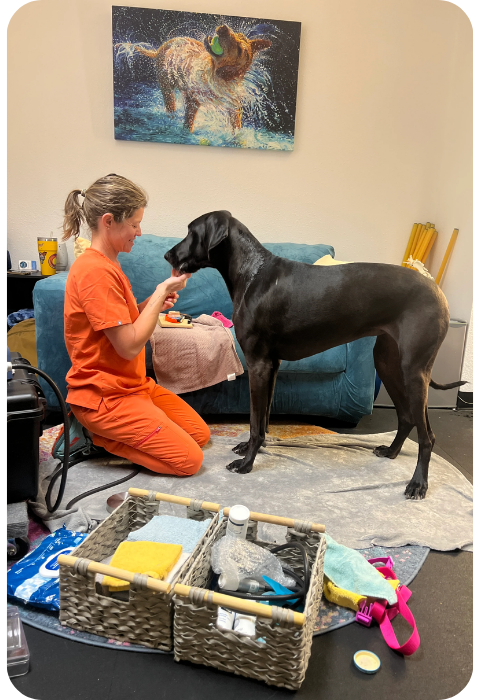
Lifestyle Recommendations:
- Nail Care: Regularly trim your dog’s nails to avoid paw dragging that could worsen their condition.
- Weight Control: Maintain your dog at a healthy weight to relieve pressure on their joints. After Gigi was diagnosed, we successfully helped her shed nearly 15 pounds, which significantly improved her condition.
- Vehicle Ramps: Incorporate ramps for easier access to and from the car, or when navigating elevated areas.
- Orthopedic Dog Bed: Invest in an orthopedic dog bed like Big Barker to prevent your dog from lying on hard surfaces, thus reducing discomfort.
- Physical Activity: Collaborate with your vet to devise a safe exercise regimen that keeps your dog active while protecting their spine.
- Floor Rugs: Place rugs on slippery floors to provide better traction for your dog, offering them considerable relief.
- Dietary Supplements: Discuss with your vet the addition of specific supplements tailored for a Wobbler Dog, which can have a significant positive impact.
- Prescription Medications: Be open to the use of prescribed drugs for your dog. Based on professional advice from our vet team, sometimes Gigi requires doses higher than initially expected. Managing pain in Wobbler Syndrome is critical, and medication decisions should be left to veterinary professionals.
- Diet: Proper nutrition is crucial in supporting the health of a dog with Wobbler Syndrome, playing a key role in their overall management.
Nutritional tips:
- Omega-3: Incorporate supplements such as Omega-3 fatty acids to aid in maintaining joint health and minimizing inflammation.
- UC-II Collagen: Employ UC-II collagen for its benefits in promoting robust joint function, with studies indicating its superiority over traditional glucosamine and chondroitin supplements in effectiveness.
- Premium Diet: Ensure your dog is on a premium diet tailored for large breeds. Seek your veterinarian's advice for the best options.
- Diet Endorsed by Veterinarians: For certain conditions, your veterinarian might recommend a specific diet to help manage your dog's health optimally. Whether it's a prescription diet or not, it's crucial to have your veterinarian's approval on your dog's nutritional plan to prevent exacerbation of Wobbler Syndrome and avoid other potential health complications.

6) Treatment Options for Wobbler Syndrome
Dr. Jeremy: There are two primary treatment approaches for Wobbler Syndrome:
1) Non-surgical treatment options
2) Surgical intervention
The decision between these options hinges on the seriousness of the condition and the symptoms presented. Surgical intervention might provide a greater possibility for improvement but comes with potential risks.
Non-surgical management includes restricting physical activities and administering medications to alleviate inflammation and decrease pressure on the spinal cord.
Could you explain your process in choosing Gigi's course of treatment, Natalie?
Gigi's Treatment Options:
Natalie: Given Gigi's condition, with significant compression at six points along her spine, opting for surgery carries considerable risks. It has been advised that surgery should only be considered as a last resort for her, essentially our 'hail mary'. Surgery might become an option should Gigi ever lose complete mobility, but at this stage, the drawbacks of undergoing surgery far exceed the benefits of managing her condition through medication.
The extensive compression affecting her nerves means Gigi experiences episodes of severe pain. Ever since her diagnosis, I've constantly worried about whether she's in pain. Ensuring she lives a life free from pain is paramount to me.
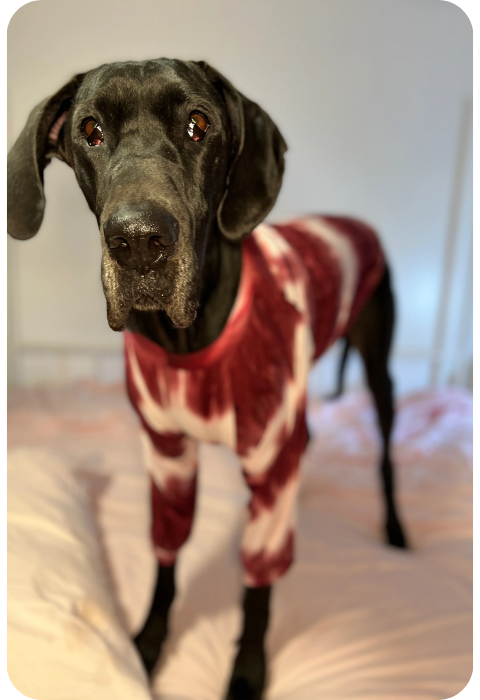
Treatment Options for Gigi / Things That Help:
- Administering Medication: Making the choice to medicate your cherished pet can feel overwhelming, with concerns about potential side effects or the impact of long-term use. Nonetheless, for dogs suffering from ongoing discomfort, the right medication can offer much-needed relief. It's important to understand that veterinary medicines undergo rigorous testing and are prescribed with a focus on maximizing benefits and reducing risks. These treatments can greatly improve your dog’s comfort, enhance their mobility, and prevent further health decline. Seeking advice from a veterinarian experienced in your dog’s specific health issue can provide peace of mind and help identify the best treatment plan, ensuring a happier, more comfortable life for your pet.
- Acupuncture: Considering alternative treatments like acupuncture could offer additional support in managing pain and enhancing your dog’s quality of life.
- CBD Usage: Employing CBD alongside traditional anti-inflammatory drugs can have a significant impact in easing discomfort for dogs with Wobbler Syndrome.
- Physical Rehabilitation: Engaging in physical therapy is beneficial for dogs diagnosed with Wobbler Syndrome, aiding in the stabilization of the cervical vertebrae and enriching their overall well-being.
- Laser Treatment: Non-surgical laser therapy has been effective in decreasing inflammation and alleviating pain without invasive procedures.
- Veterinary Chiropractic Care: Consultation with a veterinary chiropractor can lead to improvements in your dog’s mobility and overall comfort.
- Exploring Innovative Treatments: Be open to investigating cutting-edge treatments, such as hyperbaric oxygen therapy, which might provide your dog with further comfort.
- Following Veterinary Advice on Supplements: Adhering to your vet's recommendations on which supplements are beneficial and which to avoid is essential. Refer to the supplement guide below for more details.
7) Supplement List
Natalie: It is so important to listen to your veterinarian team when it comes to fueling your dog with the right supplements for their disease. Some supplements can actually hurt your dog.
Gigi is on the following supplements, but it may be very different for your dog (all dogs are different- speak to your vet!)
-
Jope with UC-II®: Jope with UC-II® is an undenatured type II collagen derived from chicken sternum cartilage with a patented extraction process and has been shown to work better for pain relief and inflammation control than glucosamine.
- Dasuquin® Advanced with ESM Soft Chews for Dogs: This dasaquin formula made for large breed dogs can only be purchased through your veterinarian and has been shown to help support a quick response in joint comfort and function for dogs.
- Omega 3: Gigi takes Dr. Harveys fish oil (Omega 3 blend). When looking into omega 3 fish oil blends, you need to speak with your veterinarian about the right DHA dosage for their size / diagnosis. Docosahexaenoic acid (DHA) is an omega-3 fatty acid found in cold-water, fatty fish, such as salmon and some fish oils for pets on the market have very low proportions of DHA.
- ThorneVet CurcuVET-SA150: Curcuvet-SA150 is a curcumin (turmeric) supplement for pets that works quickly to reduce inflammation and is especially beneficial to the liver, heart, GI tract and pets with joint pain.
- CBD: CBD can be an effective inflammatory relief for Gigi when used correctly and when you use the right brand, and we use the brand from Pet Releaf.
- VisbiomeVet: Visbiome Vet probiotic has the highest available concentration in probiotics when purchased directly from your vet. Additionally, Visbiome Vet probiotics’ blends have been clinically tested in dogs and cats which is important to me as a pet owner.
- MYOS Muscle & Joint Formula with Green Lipped Mussel: MYOS Canine Muscle & Joint Supplement is a dog muscle supplement clinically proven to help build muscle and support canine joint health.
- Adequan Canine: Although this is an injection and not something Gigi takes orally, Gigi receives Adequan injections which is proven to effectively treat arthritis by addressing the underlying cartilage deterioration and controlling the clinical signs.
Always speak with your veterinarian before giving your dog any supplements. All dogs are different and require different foods, supplements and treatments. Gigi's diet and supplement program are all veterinarian approved and we are so grateful for her veterinarian team.
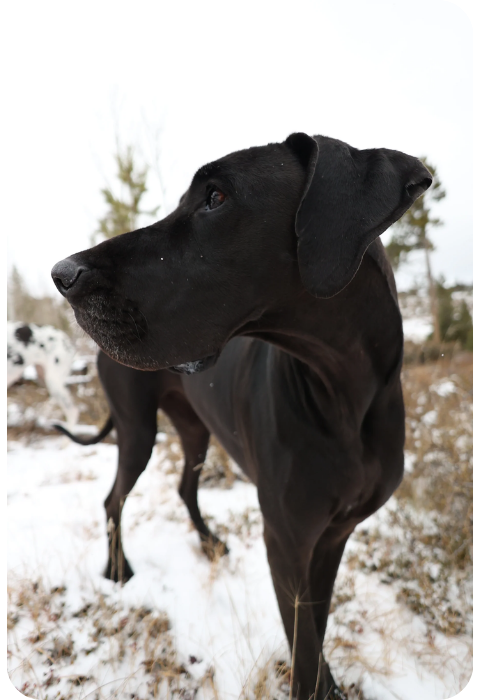
8) Things You Should or Should Not Do For Dogs with Wobbler Syndrome
Here are the things you should be wary of:
9) Additional Tips for Managing Wobbler Syndrome
Natalie: Caring for a dog with Wobbler Syndrome presents its challenges, yet it's crucial to cherish every moment spent together. Dedicate time to activities your dog loves, shower them with affection, and ensure they're always feeling supported. Consistent veterinary visits are vital to keep track of their health and adapt their treatment accordingly.
Read more about Gigi's experience with Wobblers syndrome here!
10) Surgical Treatment for Wobbler Syndrome
Dr. Jeremy: Several surgical interventions are available based on the specific form of Wobbler Syndrome present. For example, ventral slot decompression surgery is an option for disc protrusion issues, provided there's no sign of instability or nerve root compression. This procedure entails excising a segment of bone from a vertebra to alleviate pressure.
For situations involving vertebral instability, more intricate methods like distraction-fusion might be recommended. This procedure involves the stabilization of vertebrae with screws. It's important to discuss these options thoroughly with your veterinarian and a specialist surgeon.
11) Causes of Wobbler Syndrome
Dr. Jeremy: The exact causes of Wobbler Syndrome are not fully understood, but genetic predisposition and dietary factors, such as overfeeding, are suspected to play roles.
Read more about Wobblers in dogs here.
12) Prognosis: Quality of Life with Wobbler Syndrome
Dr. Jeremy: The outcome for each dog depends on various elements, such as the intensity of symptoms, age when symptoms first appear, breed, and how well they respond to treatment. With appropriate care, many dogs can enjoy a high quality of life. Research from Ohio State University involving 104 dogs shows that about half of the dogs see improvement with medical management, 30% stay the same, and 20% deteriorate. Surgery offers around an 80% chance of success.
Conclusion
Wobbler Syndrome presents its difficulties, yet it's a condition that can be managed effectively with the right approach. Through careful management, medications, and occasionally surgery, dogs affected by this syndrome, like Gigi, can enjoy fulfilling lives. It's crucial for pet owners to be well-informed and collaborate closely with their veterinarians to achieve optimal health outcomes. The journey of Natalie and Gigi showcases the strength and flexibility both dogs and their owners possess when navigating health obstacles.
Prompt recognition of symptoms and initiating appropriate care are key to enhancing a dog's quality of life. Natalie's strategy, which may include the use of UC-II collagen and additional supplements, highlights the significance of tailored care plans. Her experiences offer priceless guidance for those caring for a dog with Wobbler Syndrome.
As our understanding of this condition expands, it's important to acknowledge the individuality of each dog. A treatment that benefits one dog might not be as effective for another. Nevertheless, with professional medical advice, affection, and dedication, we can provide the strongest support for our beloved pets.
Let's aim for a future where all dogs can enjoy their lives to the fullest, despite any challenges they may face.


Author: Dr. Jeremy
Doctor of Veterinary Medicine (DVM), MS



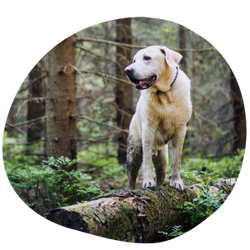


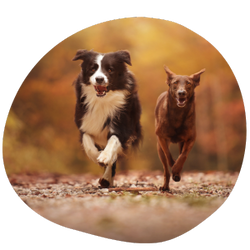
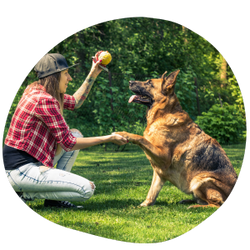

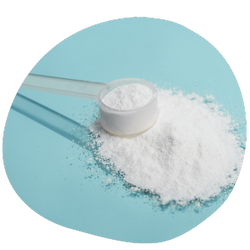
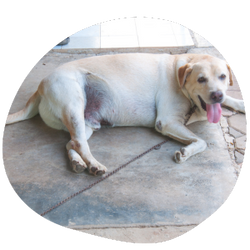

Leave a comment